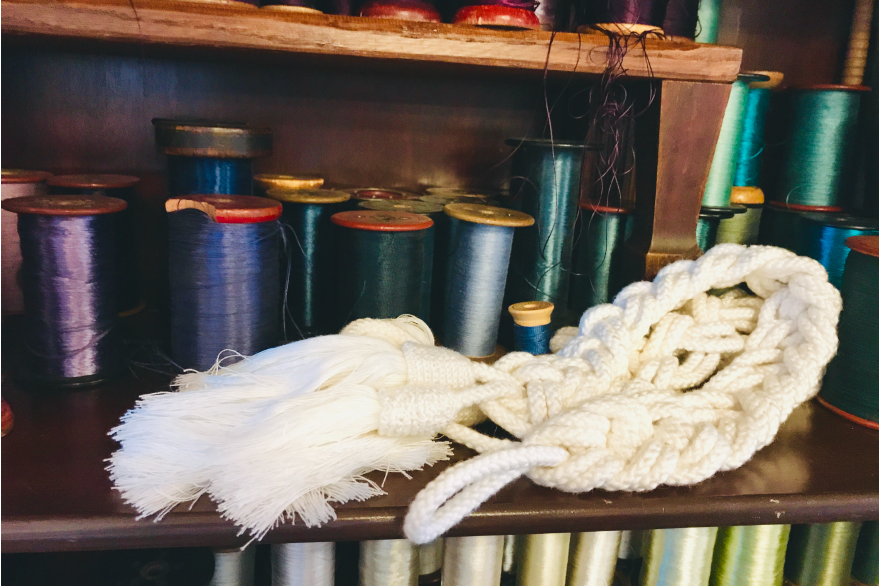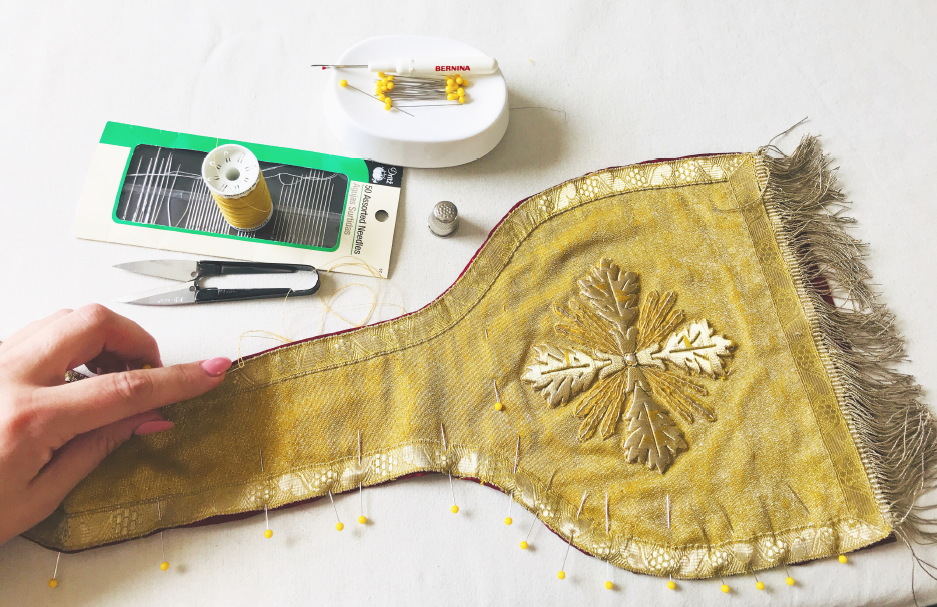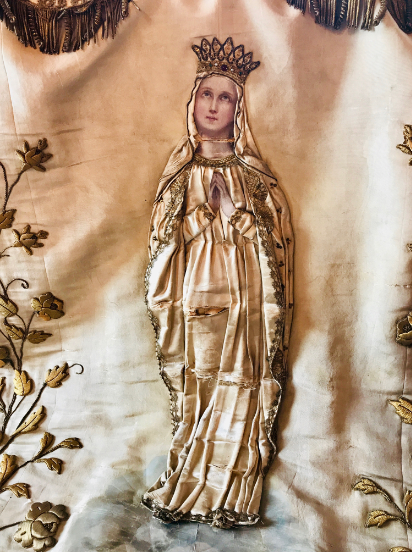
By Susan-Jayne F. Caballero
As so with all of the liturgical arts, sacred vestments are essentially permanently fixed in our view while we attend Mass and we are reminded of their historical importance. Until the Seventeenth Century, the term “man of the cloth” meant any man with a designated work uniform but eventually applied only to clergy. There’s something dignified and instinctively symbolic, with Christ, His Church and the linens that serve their Divine purpose in the Mass. Sacred vestments become a living memorial and are highly tangible to our senses as they move about with the priests who wear them in persona Christi. They soak in the fragrance of incense, offer beauty in colorful symbolic motifs and feel rich to the touch with the luster and gentility of finely woven natural fibers.
This very functional contact with humanity is a beautiful mystery when contemplating Christ clothed with the very finest offering the earth can provide. Naturally, it’s nearly impossible to explore the entire development of sacred vestments in one sitting. However, a succinct focus that comes to mind is presented through the redemptive work going on all over the world to lovingly save sacred vestments in disrepair. Miraculously, many fine vintage sets are still employed at Mass, and more hands are being offered in prayer to assist with care and maintenance, Deo Gratias!

While vintage pieces are studied and restored, new creations move the story to the next chapter in a continuous thread of technique, devotion and tradition. The truth is, all kinds of varieties of ecclesiastical tailoring, lacemaking, woven cloth, embellishment and decoration are alive and well in several areas across the globe. Particularly interesting is the beautiful bridge between textile décor and sacred vestments. Nothing brings forth more joy than when I see synergies emerge between the two as they have throughout history. Tradition intersects now with technology, and a simplicity exists in a unique way. Artisans and vendors of all kinds connect domestically and internationally via instantaneous means of communication. Possibilities are endless with the right prayerful optimism and a fearless effort to preserve or revive traditional techniques, specialty machines and vestment-specific materials so they thrive rather than vanish.

Restoration demands a certain discipline of patience and generosity for cost and timing. Tradition is timeless, but labor and materials are fixed, albeit rather multifaceted. A melting pot of women religious, priests, organized sewing guilds, vendors and artisans of all kinds are rising up in unison to lead the charge to resurrect or preserve time-honored techniques and devotional practices for crafting and caring for sacred vestments and liturgical linens used daily—and with rigor.

Just recently, I had the privilege of visiting the fine women of the esteemed Saint Martha’s Guild of Saint John Cantius Church in Chicago. They serve Christ by taking excellent care restoring vintage vestments, crafting new sets and repairing daily clerical attire for the good Canons Regular of Saint John Cantius parish. After my brief sojourn in their midst, I am left with a type of healing inspiration and a reassurance of everything I believe in regarding restoration of the sacred.
The pieces literally fused together while learning about the Polish professor saint. One of his miracles in particular connected the dots for me. Upon returning a shattered pot of water to a distraught poor woman who had dropped it by accident, Saint John Cantius gave it back to her in perfect condition and filled with milk, something more precious than water. Not only reminiscent of Jesus’ first miracle, it’s a powerful metaphor for restoring all things sacred. There I was, surrounded by hands that exist to serve, and each one of us with our own shattered pot (or two) to share. Transfixed before me in this little workroom, I was likewise surrounded by decades of sacred vestments patiently waiting to be returned to their original splendor and each with countless Masses served at the behest of countless men of the cloth. The threads of continuity had woven a timeless narrative of redemption.

While great moments of producing bespoke, old-world, artisan craft exists, undoubtedly the fervor will continue to gain momentum as we experience rising numbers of traditional priests and priestly fraternities, women’s orders and laity alike.
Glimpses of the reverent past seem to inspire a wide audience as much as they always have. It’s no secret that we draw up new ideas while honoring those from antiquity where an obvious truth was infused alongside aesthetic. A certain Neo-Renaissance is creating a platform for restoring the sacred, and the family of liturgical arts are working in tandem with the hard work of our priests and sisters on the front line bringing souls to Christ and nurturing authentic Catholic identity.

Related Articles
No user responded in this post